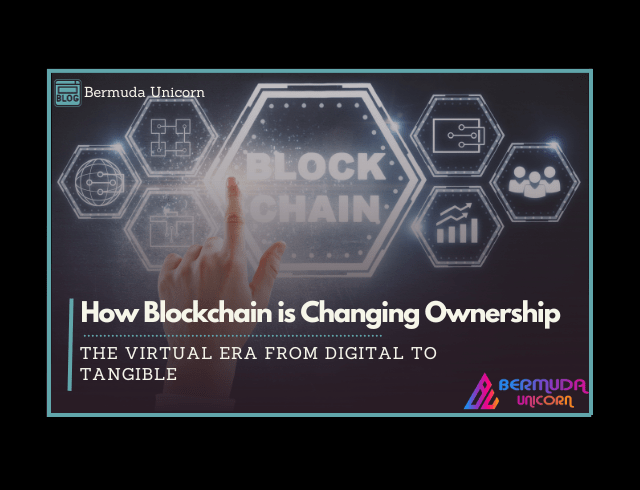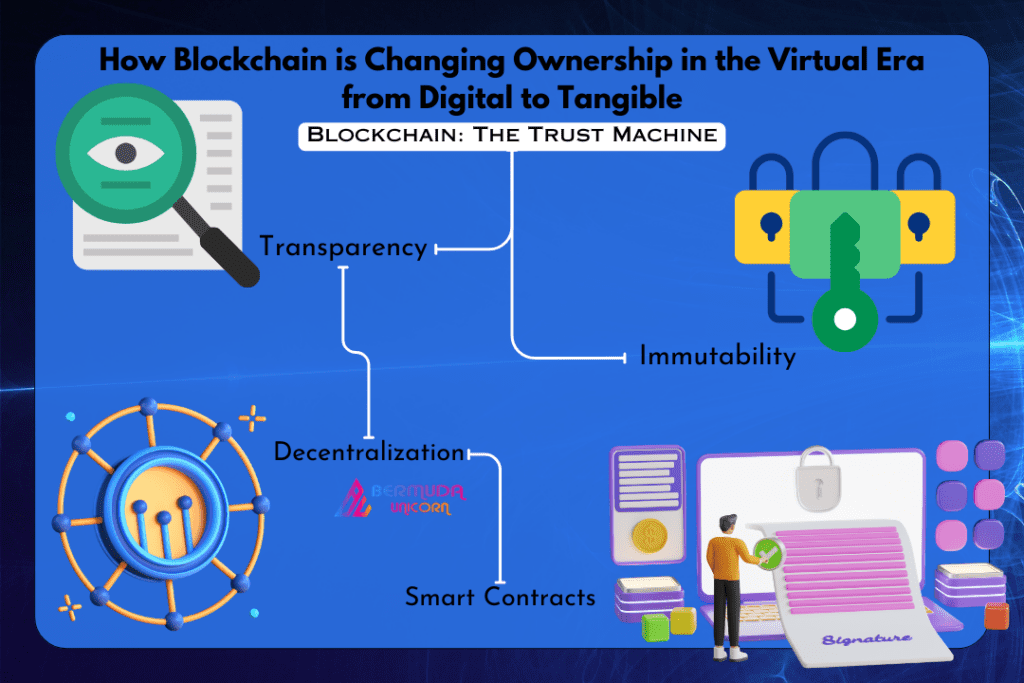![]()

In an ever more digital world, the concept of ownership is undergoing a profound transformation. The ascent of blockchain technology is birthing new forms of ownership that bridge the gap between the virtual and the tangible. Blockchain, with its decentralized and immutable ledger, is altering the way we perceive and establish ownership, particularly in the virtual realm. Here, we will delve into how blockchain shapes the ownership landscape in the digital era.
The Digital Ownership Challenge
In the digital age, ownership has become a complex and fluid concept. Also, with the advent of digital goods, such as e-books, music, and in-game assets. The lines between physical and digital ownership have blurred. Unlike traditional assets, digital goods often lack the characteristics of physical ownership. You can’t touch or hold them, and they can be easily replicated or transferred without leaving a trace.
This shift towards digital ownership presents a unique challenge. Also, how can you prove that you own a particular digital asset, and how can you prevent unauthorized copying or distribution? Blockchain offers a compelling solution.
Blockchain: The Trust Machine
Block-chain technology is fundamentally a decentralized and distributed ledger that meticulously documents transactions across a network of computers. Also, what distinguishes it is its inherent immutability and transparency. Once a transaction is added to the blockchain, it cannot be altered, and the entire network can verify and view the transaction history. This level of trust and transparency makes blockchain a game-changer for establishing and proving ownership in the digital realm.

NFTs: Bringing Tangibility to Digital Assets
Non-fungible tokens (NFTs) stand as a prime example of how blockchain reshapes ownership in the virtual era. NFTs represent unique digital tokens that signify ownership of a particular digital or physical asset, such as artwork, collectibles, music, or even real estate. The blockchain records the NFT, thereby establishing clarity about the owner of the asset and its transaction history.
What makes NFTs fascinating is their capacity to transform digital assets into tangible ones. Although the digital file or asset retains its intangibility, the associated NFT functions as a certificate of ownership. NFTs have caused a storm in the art and entertainment world, as artists and creators are selling their digital works for millions of dollars. Now, ownership of these digital assets is as verifiable as possessing a piece of traditional art.
Blockchain Gaming: True Ownership of In-Game Assets
In the realm of gaming, blockchain technology is sparking a revolution in the concept of ownership. In many video games, players obtain in-game assets like skins, weapons, and characters. Traditionally, these assets are owned by the game publisher. Also, players have only a license to use them. Blockchain-based gaming platforms are altering this dynamic.
Blockchain technology empowers players to own their in-game assets through NFTs truly. This implies that players can purchase, sell, and trade in-game items on external marketplaces. Also, the blockchain verifies ownership of these assets. In-game assets are no longer confined within a closed ecosystem; players from around the world can buy, sell, and treasure them.
Immutable Provenance and Intellectual Property
The immutable ledger of blockchain holds a powerful application in protecting intellectual property and establishing provenance. Artists, writers, and content creators can record their work on blockchains, thereby proving the time of creation and the rightful owner. This becomes invaluable in copyright disputes and ensures that creators receive fair compensation for their work.
Challenges and Considerations
While blockchain technology promises to change ownership in the virtual era, it also poses challenges. Ongoing concerns include scalability and energy consumption, especially with popular blockchain networks like Ethereum. Furthermore, the legal framework regarding blockchain ownership is still evolving, and issues like fraud and theft in the NFT space have raised questions about regulation and consumer protection.
In conclusion, blockchain technology is turning the virtual era into a reality where ownership transitions from digital to tangible. Whether it’s achieving true ownership of in-game items, making digital assets as real as physical ones through NFTs, or securing intellectual property rights, blockchain is redefining how we establish, protect, and transfer ownership in the digital world. As technology continues to evolve, it’s evident that the notion of ownership in the virtual era is undergoing a permanent transformation.
